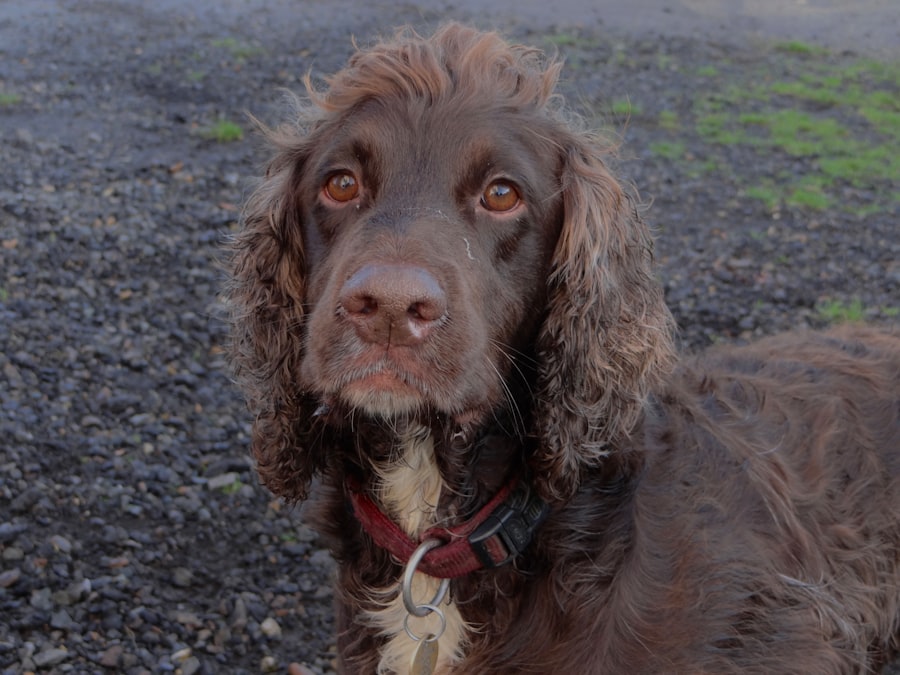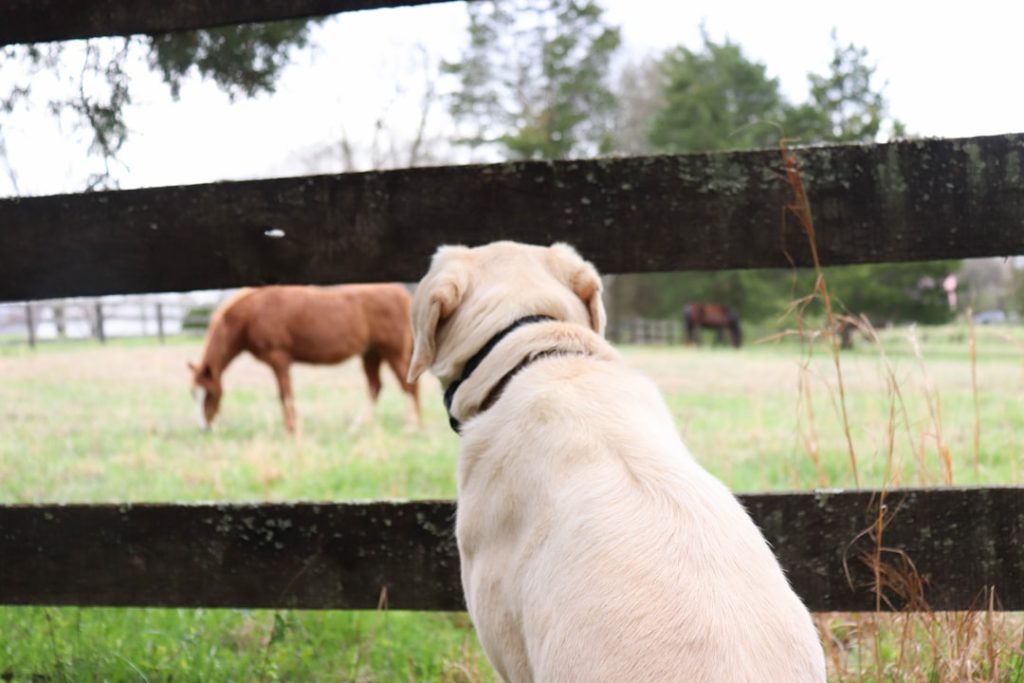Compatibility between dogs and chickens is crucial for their coexistence. Dogs are natural predators, while chickens are prey animals, making it essential to choose dog breeds known for their gentle nature towards other animals. Individual personalities of both dogs and chickens also play a role in their compatibility.
Some dogs may have a high prey drive, making them unsuitable for living with chickens, while some chickens may be easily stressed by a dog’s presence. Understanding the compatibility between dogs and chickens is vital for creating a safe and harmonious environment. A well-matched pair can coexist peacefully, providing companionship and entertainment for each other.
Conversely, a mismatched pair can lead to stress, fear, and potential harm for both animals. The compatibility between dogs and chickens also affects the overall household dynamics. Pet owners should consider the specific needs and behaviors of both species to create a suitable living environment.
By understanding the importance of compatibility, owners can make informed decisions about which dog breeds are appropriate for living with chickens and how to best introduce and manage their interactions.
Table of Contents
- 1 Characteristics of Dog Breeds that Get Along with Chickens
- 2 Training and Socialization for Dogs and Chickens
- 3 Introducing Dogs to Chickens
- 4 Supervising Interactions between Dogs and Chickens
- 5 Common Challenges and Solutions
- 6 Conclusion and Final Considerations
- 7 FAQs
- 7.1 What are some dog breeds that are known to get along with chickens?
- 7.2 What traits should a dog have to get along with chickens?
- 7.3 How can I train my dog to get along with chickens?
- 7.4 Are there any dog breeds that are not recommended to be around chickens?
- 7.5 What precautions should I take when introducing a new dog to my chickens?
Key Takeaways
- Compatibility between dogs and chickens is crucial for their safety and well-being.
- Certain dog breeds, such as retrievers and herding breeds, are more likely to get along with chickens.
- Training and socialization are essential for both dogs and chickens to coexist peacefully.
- Introducing dogs to chickens should be done gradually and under supervision.
- Supervising interactions between dogs and chickens is necessary to prevent any potential harm.
Characteristics of Dog Breeds that Get Along with Chickens
Low Prey Drive: A Key Characteristic
Dog breeds with a low prey drive are ideal, as they are less likely to chase or attack chickens. Breeds originally bred for hunting or herding may have a strong instinct to pursue small animals, making them less suitable for households with chickens.
Gentle and Calm Nature: A Must-Have
Breeds known for their gentle and calm nature, such as Golden Retrievers, Labradors, or Poodles, are more likely to coexist peacefully with chickens. These breeds are less likely to view chickens as prey, making them a great choice for households with both dogs and chickens.
Energy Level and Size: Important Considerations
The energy level and size of the dog breed are also crucial factors to consider. High-energy breeds may be too rambunctious around chickens, while low-energy breeds are more likely to be relaxed and less stressful for the chickens. Additionally, the size of the dog breed should be compatible with the size of the chickens to avoid unintentional intimidation or injury. By considering these characteristics, pet owners can create a harmonious living environment for both dogs and chickens.

Training and socialization are essential components of creating a harmonious relationship between dogs and chickens. For dogs, basic obedience training is crucial in teaching them to control their impulses and respond to commands, especially around chickens. Training can help dogs learn to ignore or respect the presence of chickens, reducing the risk of predatory behavior.
Socialization with chickens can also help dogs become accustomed to their presence and learn to coexist peacefully with them. By exposing dogs to chickens in a controlled and positive manner, pet owners can help them develop a healthy relationship with their feathered companions. Similarly, socialization is important for chickens as well.
Chickens that are familiar with dogs from a young age are more likely to be comfortable around them. By gradually introducing chickens to well-behaved dogs in a safe environment, pet owners can help them acclimate to each other’s presence. Additionally, providing a secure and enriching environment for both dogs and chickens can help reduce stress and anxiety, promoting a more positive relationship between the two species.
Through training and socialization, pet owners can help foster a peaceful coexistence between dogs and chickens in the household.
Introducing Dogs to Chickens
Introducing dogs to chickens should be done gradually and carefully to ensure a positive experience for both animals. It is important to start by allowing the dog to observe the chickens from a distance while on a leash, teaching them to remain calm and controlled in the presence of the birds. Positive reinforcement techniques, such as treats or praise, can be used to reward the dog for calm behavior around the chickens.
As the dog becomes more comfortable, they can be allowed closer access to the chickens under close supervision. It is also important to provide a safe space for the chickens where they can retreat if they feel threatened by the dog. This could be a separate fenced area or coop where the chickens can escape from the dog if necessary.
By providing a safe retreat for the chickens, pet owners can help reduce their stress and anxiety during the introduction process. Additionally, it is important to monitor the body language of both the dog and the chickens during introductions. Signs of aggression or fear should be addressed immediately, and interactions should be paused if either animal becomes stressed or agitated.
By following these steps, pet owners can help ensure a smooth and positive introduction between dogs and chickens.
Supervising Interactions between Dogs and Chickens
Even after successful introductions, it is important to continue supervising interactions between dogs and chickens to ensure their safety. Dogs should never be left unsupervised around chickens, as even well-behaved dogs may still have moments of instinctual behavior that could put the chickens at risk. Regular supervision allows pet owners to intervene if necessary and prevent any potential conflicts or accidents.
Additionally, it is important to continue reinforcing positive behavior from both the dog and the chickens during interactions. Rewarding calm behavior from the dog and providing enriching experiences for the chickens can help maintain a peaceful coexistence between the two species. By supervising interactions and providing positive reinforcement, pet owners can help foster a harmonious relationship between dogs and chickens in the long term.
Common Challenges and Solutions

Managing Prey Drive
One common challenge is managing a dog’s prey drive, especially in breeds with a strong hunting instinct. In these cases, it may be necessary to use management tools such as leashes or muzzles when the dog is around the chickens.
Reducing Focus on Chickens
Additionally, providing plenty of physical and mental stimulation for the dog through exercise and enrichment activities can help reduce their focus on the chickens. This can help prevent unwanted behavior and ensure a harmonious coexistence.
Preventing Accidents and Ensuring Safety
Another common challenge is preventing accidental injury from rough play or overenthusiastic behavior from the dog. Providing separate spaces for the dog and chickens when unsupervised can help prevent any potential accidents. Ensuring that the chickens have secure housing and fencing can also help protect them from any unintentional harm from the dog.
By addressing these common challenges with proactive solutions, pet owners can create a safer and more harmonious environment for both dogs and chickens. In some cases, professional help from a dog trainer or behaviorist may be necessary to address specific challenges related to keeping dogs and chickens together.
Conclusion and Final Considerations
In conclusion, creating a harmonious relationship between dogs and chickens requires careful consideration of compatibility, training, socialization, introductions, supervision, and proactive management of potential challenges. By choosing dog breeds with low prey drive and gentle nature, providing training and socialization for both dogs and chickens, carefully introducing them under supervision, and addressing common challenges with proactive solutions, pet owners can create a safe and peaceful environment for both animals. It is important to remember that every dog and chicken is unique, so individual personalities and behaviors should be taken into account when creating a living environment that accommodates both species.
By prioritizing their safety and well-being through informed decision-making and attentive care, pet owners can successfully keep dogs and chickens together in harmony. With patience, understanding, and proactive management, dogs and chickens can coexist as companions in a shared household.
If you’re considering getting chickens and already have a dog, it’s important to choose a breed that will get along with your new feathered friends. According to a recent article on PoultryWizard, some dog breeds are more likely to coexist peacefully with chickens, such as the Golden Retriever, the Labrador Retriever, and the Beagle. These breeds are known for their gentle and friendly nature, making them a good fit for households with both dogs and chickens. For more information on how to introduce dogs to chickens, check out this helpful article on PoultryWizard.
FAQs
What are some dog breeds that are known to get along with chickens?
Some dog breeds that are known to get along with chickens include the Great Pyrenees, the Australian Shepherd, the Border Collie, and the Newfoundland.
What traits should a dog have to get along with chickens?
Dogs that get along with chickens typically have a low prey drive, are calm and gentle, and have been properly socialized with chickens from a young age.
How can I train my dog to get along with chickens?
Training your dog to get along with chickens involves positive reinforcement, supervision, and gradually introducing the dog to the chickens in a controlled environment.
Are there any dog breeds that are not recommended to be around chickens?
Some dog breeds with high prey drives, such as terriers and hounds, are not recommended to be around chickens as they may see them as prey.
What precautions should I take when introducing a new dog to my chickens?
When introducing a new dog to chickens, it’s important to keep the dog on a leash, supervise their interactions, and provide positive reinforcement for calm and gentle behavior around the chickens.
Meet Walter, the feathered-friend fanatic of Florida! Nestled in the sunshine state, Walter struts through life with his feathered companions, clucking his way to happiness. With a coop that’s fancier than a five-star hotel, he’s the Don Juan of the chicken world. When he’s not teaching his hens to do the cha-cha, you’ll find him in a heated debate with his prized rooster, Sir Clucks-a-Lot. Walter’s poultry passion is no yolk; he’s the sunny-side-up guy you never knew you needed in your flock of friends!







